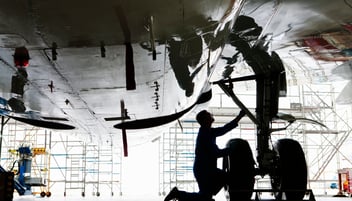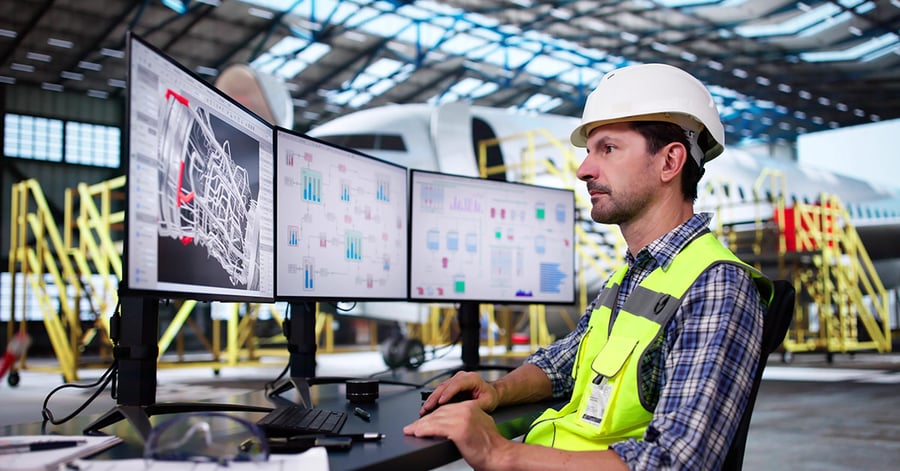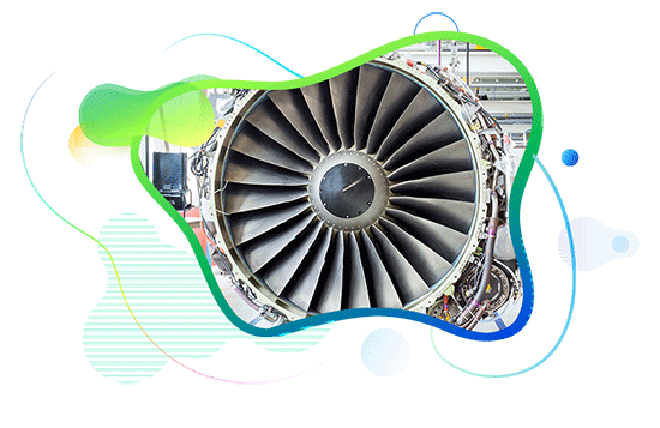
The Resilient MRO Playbook: Strengthening the 3Ps for MRO Success
Published :

At its core, resilience is the ability to withstand or quickly recover from adverse conditions. The COVID-19 pandemic served as a brutal stress test—while many companies collapsed, others not only survived but thrived. What made the difference? Resilience.
For MROs, resilience isn’t about reactive, last-minute fixes. It’s about building a solid foundation that can handle the weight of uncertainty. Think of resilience as the bedrock of a skyscraper—without it, even the most advanced systems will crumble under pressure.
In the MRO sector, resilience is built on three critical pillars:
Let’s explore how mastering these 3Ps can transform an MRO into an agile, cost-efficient, and disruption-proof operation.
MRO is a capital-intensive industry—hangars, workshops, and test cells require significant investment. However, many MROs struggle with underutilized capacity due to inefficiencies in scheduling, bottlenecks, or suboptimal workflow designs.
A well-utilized hangar means faster turnarounds, higher revenue per slot, and the ability to absorb demand surges without costly expansions. This is a key part of building a Resilient MRO.
The MRO workforce is often burdened with non-core tasks—paperwork, manual reporting, phone calls to track parts, and redundant data entry. Studies show that technicians spend 30-40% of their time on administrative tasks, leaving less time for hands-on maintenance work.
A digitally empowered workforce means faster repairs, lower labor costs, and the ability to scale operations without proportional increases in headcount, making it a critical component of a Resilient MRO.
MROs operate in a highly regulated environment, where only certified parts from approved suppliers are used. However, supply chain disruptions, tariffs, and long lead times make parts procurement a logistical nightmare.
A smart parts strategy ensures faster aircraft availability, lower procurement costs, and greater resilience against supply chain shocks—making it an integral part of a Resilient MRO.
While each of the 3Ps—Place, People, and Parts—is essential on its own, true resilience comes from their integration.
For a Resilient MRO, the power lies in the synergy of these three pillars, working together seamlessly to create an operation that can withstand and thrive in the face of disruption.
Resilience = Preparedness + Adaptability
The best MROs don’t just react to disruptions—they anticipate and neutralize them. By strengthening the 3Ps, MROs can:
In today’s unpredictable world, resilience isn’t just a strategy- it’s the ultimate competitive advantage for any MRO. The need for Resilient MRO strategies has never been greater. By focusing on the 3Ps—Place, People, and Parts—MROs can not only survive but thrive in this challenging environment. Preparedness and adaptability form the foundation for a Resilient MRO, transforming these pillars into a competitive advantage. In an era defined by uncertainty, resilience is the key to long-term success, making it essential to build an agile, efficient, and future-proof MRO.
Enterprise asset management (EAM) involves the management of mission critical assets of an organization throughout each asset's lifecycle. EAM is used to plan, optimize, execute, and track the needed maintenance activities with the associated priorities, skills, materials, tools, and information. The aim is to optimize the quality and utilization of assets throughout their lifecycle, increase productive uptime and reduce operational costs.
Enterprise asset management (EAM) involves the management of the maintenance of physical assets of an organization throughout each asset's lifecycle. EAM is used to plan, optimize, execute, and track the needed maintenance activities with the associated priorities, skills, materials, tools, and information.
The software helps in effective maintenance of assets through preventive, predictive, shutdown and breakdown maintenance strategies. The system also helps enterprises mitigate equipment risks by enhanced safety standards. The streamlined operations and improved asset performance helps organizations increase their investment effectiveness.
EAM is important because it helps organizations track, assess, manage and optimize asset quality and reliability. Asset intensive Organizations have hundreds, thousands, even millions of assets which needs to be maintained to maximize / optimize life of these assets to increase the return on investment.
The key features of effective EAM are:
Asset Intensive companies under the following Industries :
Contact us for a meeting and schedule a demo
This differs on case to case basis, based on the type of installation and unique industry specific requirements. Contact us for a meeting and schedule a demo.
This differs on case to case basis, based on the type of installation and unique industry specific requirements. Contact us for a meeting and schedule a demo.
Stay Connected, follow us on LinkedIn / Twitter to know more about EAM Software latest trends.

Prakash Babu Devara is Head of Aviation Marketing at Ramco Systems, bringing over 15 years of experience in marketing and branding. With a passion for aviation and technology, he is dedicated to bringing the best of both worlds together to drive value proliferation. Prakash has a proven track record in developing and implementing effective marketing strategies, building strong brands, and driving business growth. In addition to his role at Ramco, he is an aviation blogger and a seasoned public speaker known for communicating complex ideas clearly and engagingly.

All Rights Reserved. © Copyright 2024. Ramco Systems.